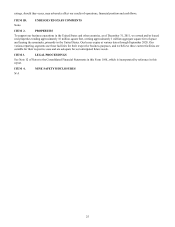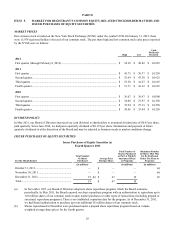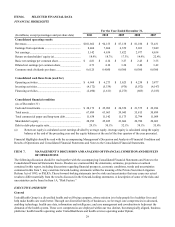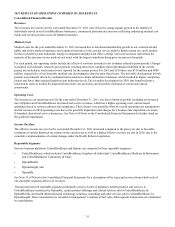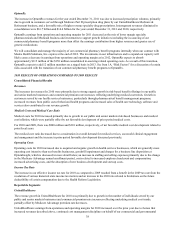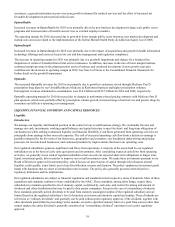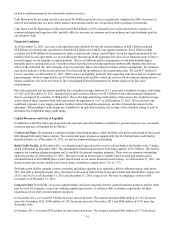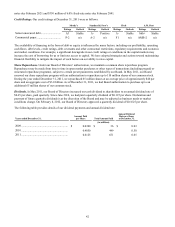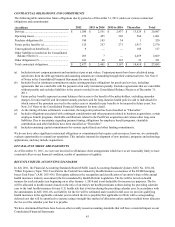United Healthcare 2011 Annual Report Download - page 35
Download and view the complete annual report
Please find page 35 of the 2011 United Healthcare annual report below. You can navigate through the pages in the report by either clicking on the pages listed below, or by using the keyword search tool below to find specific information within the annual report.33
• Payments to states for coverage of Medicare cost-sharing for certain low-income Medicare beneficiaries.
The Office of Management and Budget is responsible for determining, calculating and implementing cuts. We are exploring
strategies to mitigate any impact that may result from the cuts beginning in 2013.
Insurance Industry Fee
The Health Reform Legislation includes an annual insurance industry assessment ($8 billion levied on the insurance industry in
2014 with increasing annual amounts thereafter). The annual fee will be allocated based on the ratio of an entity's net premiums
written during the preceding calendar year to the total health insurance for any U.S. health risk that is written during the
preceding calendar year, subject to certain exceptions and uncertainties.
Our effective income tax rate will increase significantly in 2014 due to the non-deductibility of these fees.
Premium increases will be necessary to offset the impact of these and other provisions. Premium increases are generally subject
to state regulatory approval and potentially to federal review. Other market participants could increase premiums at different
levels which could impact our market share positively or negatively.
State-based Exchanges and Coverage Expansion
Effective in 2014, exchanges are required to be established for individuals and small employers as well as certain CHIP
eligibles. The exchanges will be state-based. If a state fails to establish an exchange by the required deadline, exchanges may
be administered through a federal/state partnership or by the federal government.
Among other things, the Health Reform Legislation eliminates pre-existing condition exclusions and annual and lifetime
maximum limits and restricts the extent to which policies can be rescinded. The Health Reform Legislation also provides for
expanded Medicaid coverage effective in January 2014. The Health Reform Legislation includes an MOE provision that
requires states to maintain their eligibility rules for people covered by Medicaid, until the Secretary of HHS determines that an
insurance exchange is operational in a given state. The MOE provision is intended to prevent states from reducing eligibility
standards and determination procedures as a way to remove adults above 133% of the federal poverty level from Medicaid
before implementation of expanded Medicaid coverage effective in January 2014. However, states with, or projecting, a budget
deficit may apply for an exception to the MOE provision. Additionally, individual states may accelerate their procurement of
Medicaid managed care services in 2012 and 2013 for sizeable groups of Medicaid program beneficiaries in order to even their
administrative workloads in advance of Medicaid market expansion taking place in 2014.
The Congressional Budget Office has estimated that up to 34 million additional individuals may eventually gain insurance
coverage if the Health Reform Legislation is implemented broadly in its current form. This represents an opportunity for us to
increase membership. However, serving these individuals may generate different profit margins than our existing business due
to various factors, including the health status of the newly insured individuals.
We expect existing participants in Medicare and Medicaid and new enrollees in state-based exchanges to transition between
products and programs, offering us opportunities to design products and services that enable us to compete for new business
across business segments on an ongoing basis. An acceleration of Medicaid managed care services could increase near-term
business growth opportunities for UnitedHealthcare Community & State. However, if states are successful in obtaining MOE
waivers and allow certain Medicaid programs to expire, we could experience reduced Medicaid enrollment.
Court Proceedings
Court proceedings related to the Health Reform Legislation continue to evolve. These court proceedings, and the potential for
Congressional action to impede implementation, create additional uncertainties with respect to the law. For additional
information regarding the Health Reform Legislation, see Item 1, “Business - Government Regulation” and Item 1A, “Risk
Factors.”




